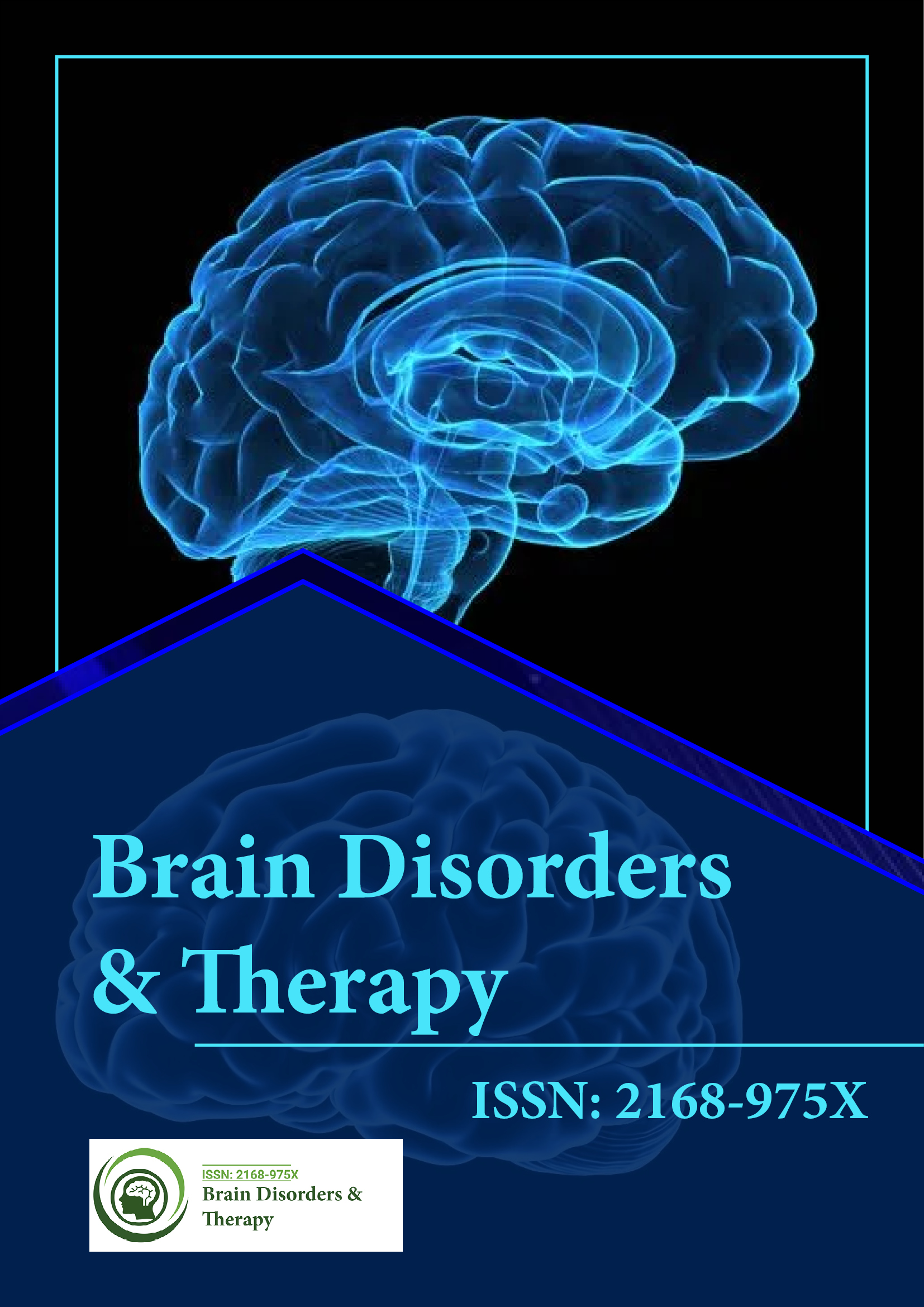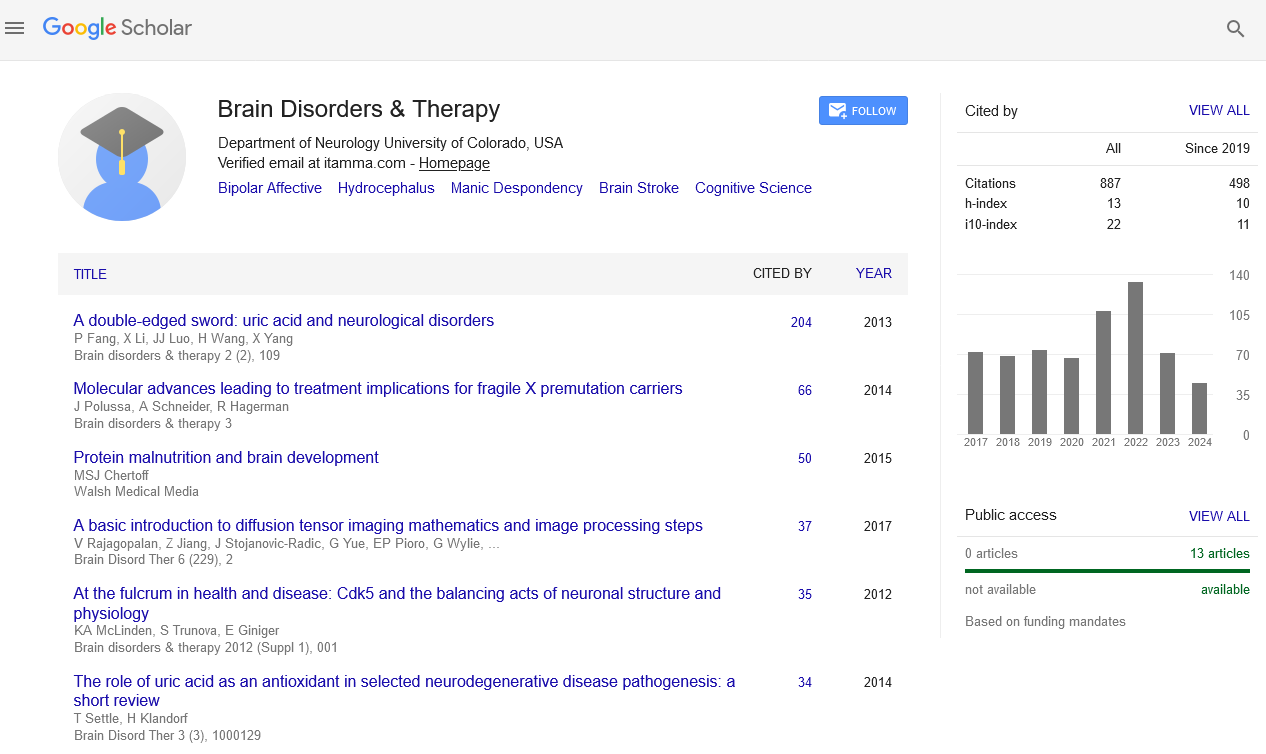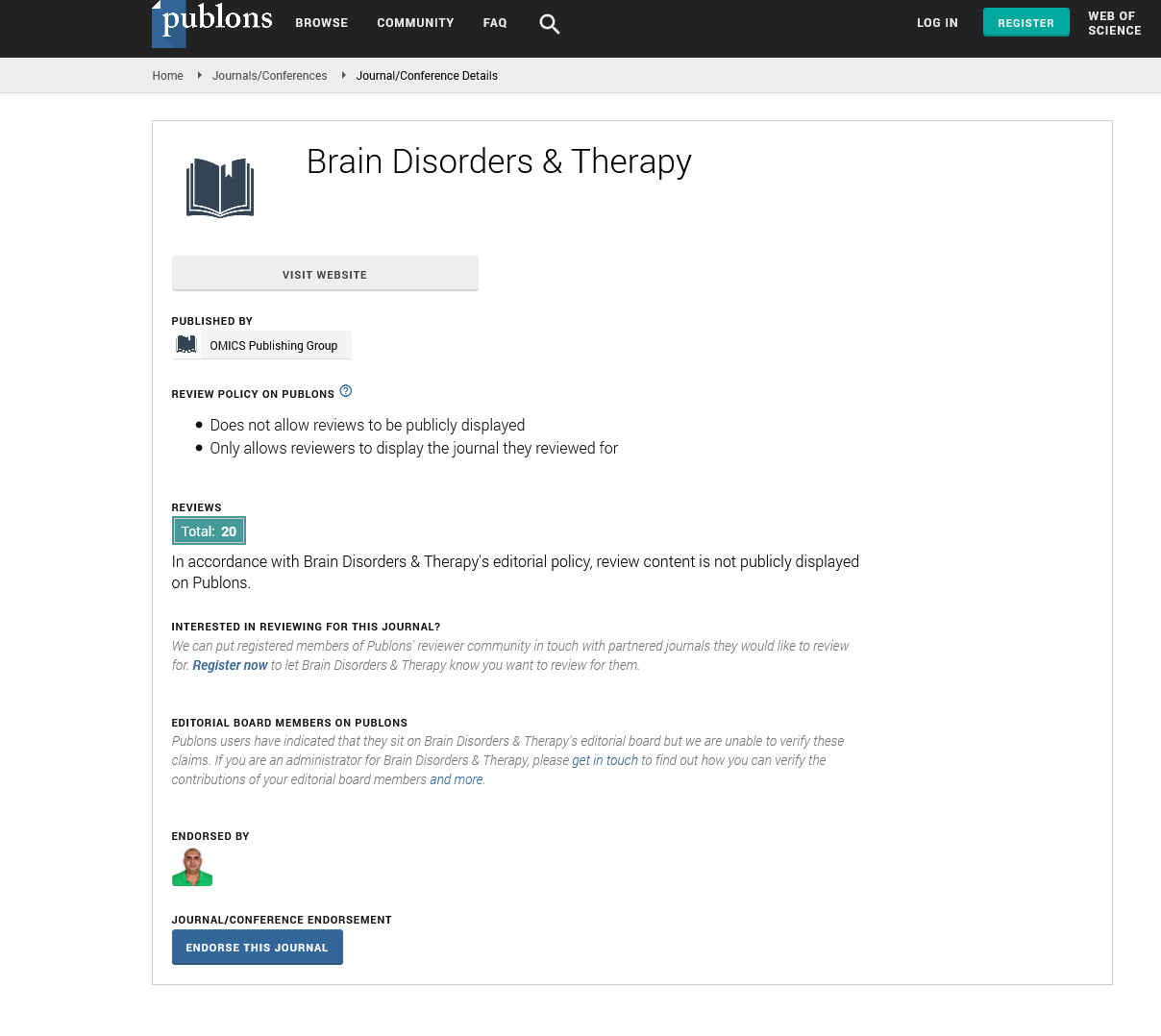Indexed In
- Open J Gate
- Genamics JournalSeek
- JournalTOCs
- RefSeek
- Hamdard University
- EBSCO A-Z
- OCLC- WorldCat
- Publons
- Geneva Foundation for Medical Education and Research
Useful Links
Share This Page
Journal Flyer

Open Access Journals
- Agri and Aquaculture
- Biochemistry
- Bioinformatics & Systems Biology
- Business & Management
- Chemistry
- Clinical Sciences
- Engineering
- Food & Nutrition
- General Science
- Genetics & Molecular Biology
- Immunology & Microbiology
- Medical Sciences
- Neuroscience & Psychology
- Nursing & Health Care
- Pharmaceutical Sciences
Perspective - (2025) Volume 14, Issue 1
Neurocognitive Benefits of Harmonizing Sleep Quality and Physical Activity
Isabella Conti*Received: 19-Feb-2025, Manuscript No. BDT-25-28917; Editor assigned: 21-Feb-2025, Pre QC No. BDT-25-28917 (PQ); Reviewed: 07-Mar-2025, QC No. BDT-25-28917; Revised: 14-Mar-2025, Manuscript No. BDT-25-28917 (R); Published: 21-Mar-2025, DOI: 10.35248/2168-975X.25.14.294
Description
In the contemporary landscape of neurocognitive health research, the dual influence of sleep and physical activity has emerged as a central theme. Both behaviors are independently associated with brain structure and function across the lifespan. However, the interaction between these two lifestyle factors and their combined impact on cognitive performance and neurobiological integrity remains underexplored. Recognizing their joint effects opens new avenues for personalized prevention strategies against cognitive decline and neurodegeneration.
Sleep is a critical process for brain maintenance and cognitive function. It facilitates memory consolidation, clears metabolic waste through the glymphatic system and supports synaptic plasticity. Disrupted or insufficient sleep is linked to reductions in gray matter volume, especially in the prefrontal cortex, hippocampus and thalamus regions integral to executive function and memory. Chronic poor sleep is also associated with increased risk for neurodegenerative diseases such as Alzheimer’s, largely through mechanisms involving amyloid-beta accumulation, neuroinflammation and impaired neural repair.
In parallel, physical activity has consistently demonstrated protective effects on brain health. Regular aerobic and resistance exercise is associated with increased hippocampal volume, enhanced white matter integrity and improved functional connectivity. These structural changes correlate with better cognitive performance, particularly in attention, processing speed and executive functions. Moreover, physical activity exerts anti-inflammatory and neuro-trophic effects, promoting Brain-Derived Neurotrophic Factor (BDNF) expression, angiogenesis and mitochondrial efficiency.
While both sleep and physical activity individually contribute to brain health, emerging evidence suggests they may interact in complex, potentially synergistic ways. For example, individuals who are physically active often experience better sleep quality, while poor sleep may reduce motivation and capacity for physical exertion. These bidirectional influences suggest a behavioral feedback loop that can either enhance or diminish cognitive and neurological outcomes, depending on the balance maintained between the two.
Recent neuroimaging studies provide preliminary support for additive or synergistic effects of healthy sleep and exercise behaviors. For instance, individuals with both adequate physical activity and optimal sleep duration show greater cortical thickness and hippocampal volume compared to those with deficiencies in either domain. Functional MRI analyses have revealed more robust connectivity within the default mode network and better regulation of the limbic system when both sleep and activity levels are favorable. These findings suggest that interventions targeting both behaviors may be more effective than those targeting one alone.
From a lifespan perspective, the joint consideration of sleep and physical activity is especially critical in aging populations, where declines in both behaviors are common and where the burden of cognitive impairment is greatest. Promoting better sleep hygiene alongside regular physical activity could act as a buffer against age-related cognitive decline, helping maintain independence and quality of life in older adults. Similarly, during early developmental windows in children and adolescents, the alignment of these behaviors may support academic performance and emotional regulation.
Despite these potential insights, several research gaps must be addressed. First, longitudinal and interventional studies are needed to disentangle causality and assess temporal relationships between sleep, activity and brain changes. Second, wearable technology and real-world data can enhance the ecological validity of findings and help personalize recommendations. Third, socioeconomic and cultural factors influencing sleep and activity patterns must be considered in various populations to ensure inclusive public health strategies.
In clinical and public health contexts, the perspective that sleep and physical activity should be evaluated and managed together is gaining momentum. Screening tools, health apps and counseling practices are beginning to reflect the interconnected nature of these lifestyle factors. As we move toward precision medicine approaches in brain health, assessing the joint behavioral profile of individuals may provide superior predictive power for cognitive outcomes than either factor alone.
In conclusion, the joint effects of sleep behaviors and physical activity on brain structure and cognitive function represent a potential frontier in neuroscience and behavioral medicine. By advancing our understanding of how these behaviors interact, we can unlock more effective strategies for cognitive enhancement, disease prevention and lifespan brain health. Future research should prioritize integrated, multi-domain lifestyle models that move beyond siloed approaches and embrace the complexity of human behavior.
Citation: Conti I (2025). Neurocognitive Benefits of Harmonizing Sleep Quality and Physical Activity. Brain Disord Ther. 14:294.
Copyright: © 2025 Conti I. This is an open access article distributed under the terms of the Creative Commons Attribution License, which permits unrestricted use, distribution, and reproduction in any medium, provided the original author and source are credited.


